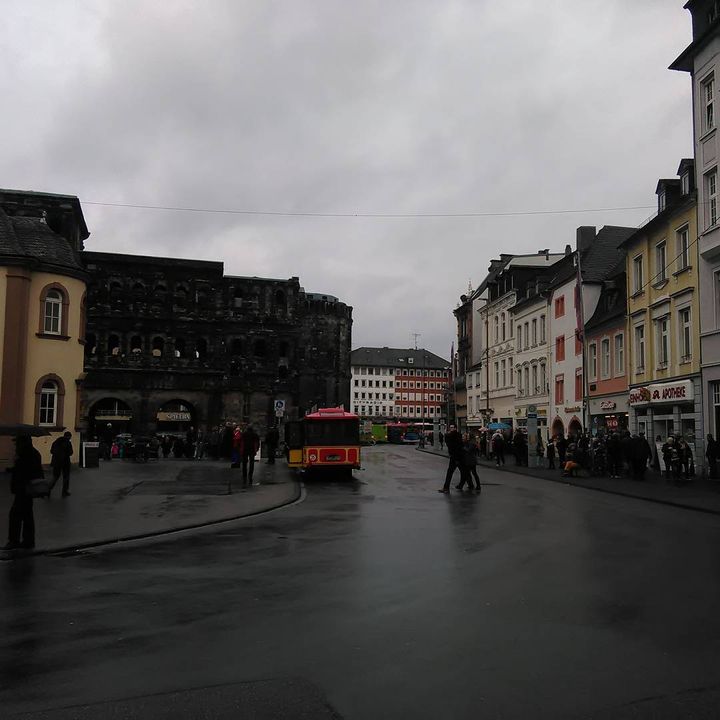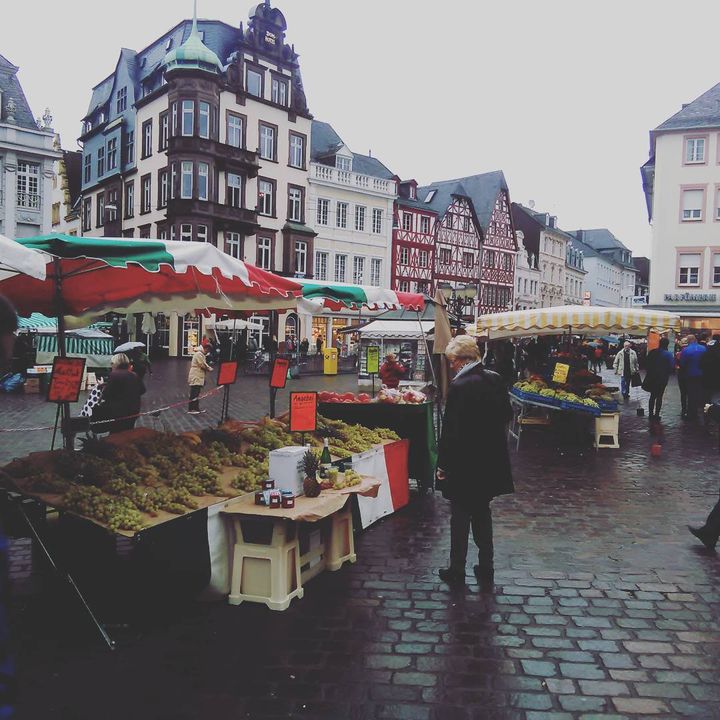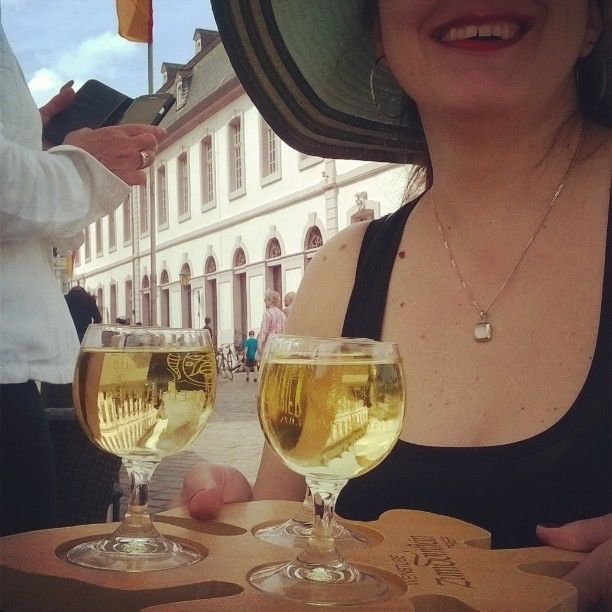I don’t believe in umbrellas – they get in the way. But it always seems to rain in Roma Secunda, or Treves, or Trier (as it's officially called), the “second Rome.”
This is not a history lesson, though, so don’t read too much into this city’s moniker. Yes, it has more Roman monuments outside of Rome than any city in the world: The Porta Nigra, the Barbara Baths and the Trier Imperial Baths, the Aula Palatina basilica, the Amphitheater, and the St. Peter Dom that safeguards the Holy Tunic. These are the main Roman sights among other lesser publicized Roman landmarks.

A view of Porta Nigra (the Black Gate) under the gray German skies.
It’s obvious why Trier enjoys its nickname more than anything. But these monuments are not why I love calling my new home Roma Secunda. My motive? I am Romanian, living in Germany. Calling Trier Roma Secunda is my way of hanging onto the idea that I am of Latin descent. As such, I look at the world around me here with a fresh perspective.

A rainy day in Trier - farmer’s market at Marktbrunnen
I love the gingerbread-style houses in the old center of Trier. I like dragging my steps down the former Roman main roads, marked in original cobblestone at Viehmarktplatz. A day in Germany’s oldest city usually starts here, because there is a good parking place nearby, in front of the Rathaus. From Viehmarktplatz I walk past the Viehmarktthermen, which are protected against public damage by a huge glasshouse. I spend a few moments looking through the windows, trying to imagine a Roman noble enjoying fruit between these ancient walls. Then I take the tourist path, because, despite the crowds, there’s something uniquely special about this route. All history and architecture walking tours pass by these houses and stop here and there with tourists looking up at the top floors of the buildings where a Madonna holding infant Jesus stands in an arched niche, or a family crest marks an entrance of a restaurant or shop. Besides, there's nothing else to attract tourist in "Germany's largest village." Yes, this is what the locals call it.
All buildings on this way have some kind of commercial business on the ground floor: shops, cafes, restaurants, specialty stores, and boutiques, most of them small and chic, others surprisingly large, considering their modest street facades. It’s fun to enter the ones that don’t have a popular brand like Promod or Douglas in fluorescent letters above their doors. Small boutiques are where the true gems are found: designer jewelry, original clothing, bargains of all kinds, scented candles – yes, Germans love their scented candles – shoes, waffles, ice cream, and handmade chocolates.
After a couple of hours browsing these shops, I finally stop at the only restaurant in Trier that still serves Roman cuisine, Zum Domstein. Alas, I don’t come here for the food! I find Roman cooking odd, sweet, and clashing. Sweet ingredients like apricots are combined with meats and herbs, but what sounds promising on paper is not delivering the expected experience for the palate. I do love the small wine tasting choice here, though.

Wine tasting at Zum Domstein - naturally, when the weather is fine.
If it’s not raining, and it usually is, I sit on the terrace that faces the Dom and watch the children playing with huge bubbles of soap in front of the Cathedral. I sip my wine – there are three small glasses served on a grape leaf shaped wooden tray and served with fresh homemade bread. The sightseeing train drives nearby carrying tourists, and I make a mental note that there are many Chinese ones aboard. This is not surprising: Trier is the birthplace of Karl Marx, and his home is now one of the city’s most popular attractions. Inside the restaurant, they have a small Roman museum, with artifacts found in the area during archaeological digs, or as a result of works of construction. Have you ever had dinner inside a history museum? Well, this is my favorite stop when I hide from inauspicious weather. I can sit here for hours with a book in my hand, at peace, despite the clatter made by other dinners.
This ends a day in the city, and I walk back to my car, and Trier feels like a different city altogether under the evening lights. It’s raining, and people rush in both directions, carrying large umbrellas. But I don’t believe in umbrellas, remember? I walk unhurried and tranquil, taking in the fragrant air of the evening: it’s been another day in Roma Secunda.
